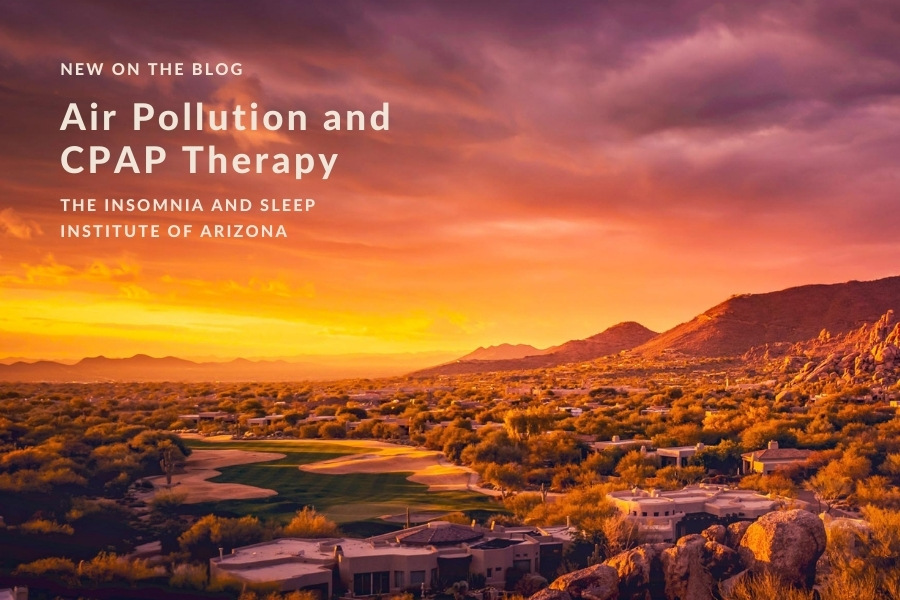How effective your CPAP therapy is depends on numerous factors including air pollution, according to research. At The Insomnia and Sleep Institute of Arizona, we are dedicated to helping you achieve the sleep you need and deserve. Obstructive sleep apnea is estimated by some to affect nearly one billion people around the globe. The standard management for OSA is CPAP therapy, and it is crucial that patients adhere to proper usage in order to yield desired results. Making sure you have the right CPAP accessories and that they fit well is foundational, but you might also bear in mind the air quality where you live (and sleep).
According to research from the University of Ottawa and Ottawa Hospital Research Institute, air pollution that is “even at relatively low levels” are linked with how effective CPAP therapy is. The full findings can be found in Chest. The authors share that it has long been known that air pollution can affect OSA via damaging airway epithelial cells, encouraging upper airway irritation, changing autonomous nervous system regulation, and activating oxidative stress. The authors stress that “reducing air pollution may thus improve the effectiveness of positive airway pressure therapy in individuals with OSA and OSA control on positive airway pressure.” Previously, the team had demonstrated “joint effects of moderate to severe OSA and air pollution on systemic inflammation.”
Study Details: OSA and Pollution
The study was longitudinal and retrospective, including over 8,000 adults with OSA. The median age was 53.9 years old and most were men (60.6 percent). Every participant had bought a CPAP between 2013 – 2017 and all had data to share. The researchers then compared data to the users’ postal codes in Canada. Air pollution concentrations were analyzed by taking into account fine particulate matter, carbon monoxide, ozone, nitrogen dioxide, sulfur dioxide, and the Air Quality Health Index.
According to the findings, there was a median of 89 days where CPAP was used by participants for at least four hours (the baseline for proper CPAP adherence in the US, too). The median daily apnea-hypopnea index flow was reported at 1.2/hour. The researchers report that an uptick in the 12-hour mean of air pollution concentration was linked with “significant increase in apnea-hypopnea index flow” for those who were abiding by CPAP best usage (4+ hours per night). They report,
This indicates that air pollution may adversely affect the physiology of individuals with OSA, even on treatment. Linking air pollution with OSA also provides an additional mechanism for the association between air pollution with cardiovascular disease. Our novel findings, if confirmed by further research, would be useful to inform policy and regulation decisions requiring estimation of the total burden of morbidity due to air pollution.
What This Means for You
There is often little you can do personally to decrease air pollution where you live. However, knowing how air pollution concentration may play a role in CPAP therapy can help you to take better control of OSA management. In addition to CPAP therapy, there are other methods that can help you decrease OSA symptoms. For instance, those who are overweight can greatly benefit from weight loss to relieve OSA symptoms. Taking control of the sleep environment, including air filters in the bedroom, can also be effective.
In some cases, patients find that CPAP therapy is not effective for them. This is rare, but when it does happen more aggressive options are available. The Inspire implant is one such tool, though it does require a minor surgery. Patients are required to undergo and fail standard CPAP therapy first before they are approved for an implant. If you fall into this category, we are one of the few centers who offer the Inspire implant and will work with you and a surgical team to get you the OSA relief you need.
To find out more about OSA and treatment options, schedule a consultation with a sleep expert today. No referral is necessary. Simply call The Insomnia and Sleep Institute during business hours or, for the quickest response, complete the online contact form now.





